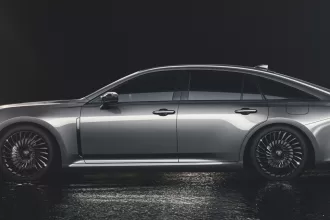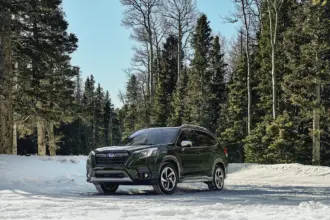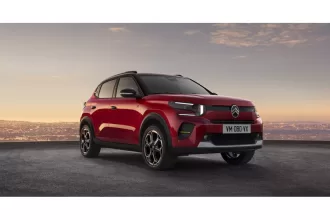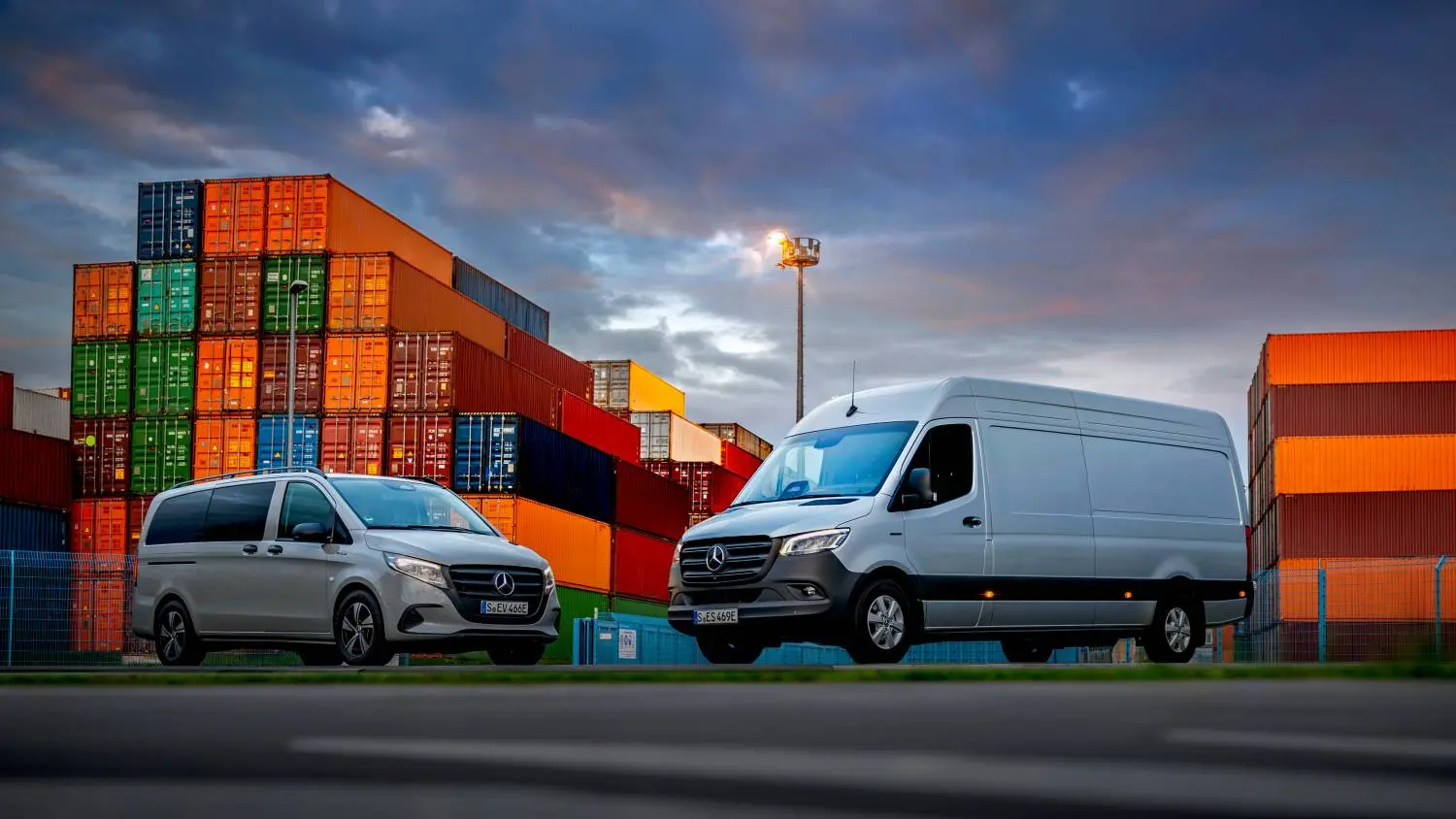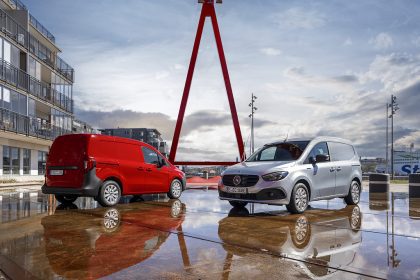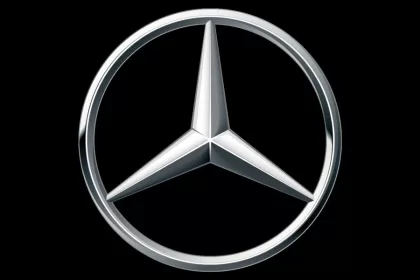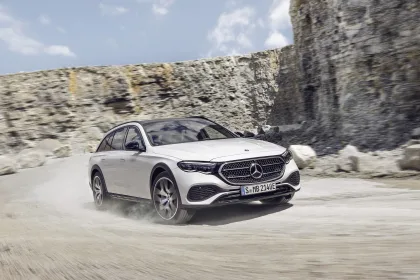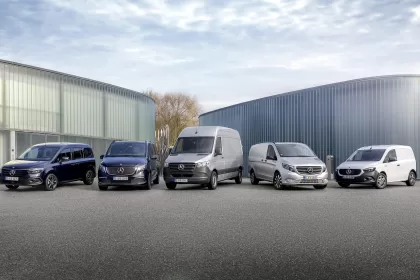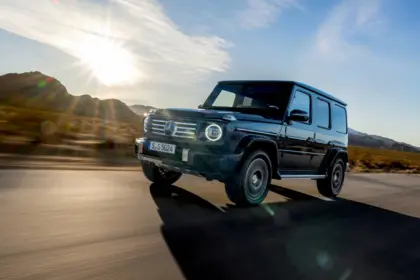- Vito, eVito, Sprinter and eSprinter deliver more comfort, safety, functionality, and digital connectivity
- Modern design paired with enhanced standard equipment and simplified offer logic
- Electrically or conventionally powered – the right vehicle for commercial use for every customer
Mercedes-Benz Vans wants to further expand its position as a leading manufacturer of premium vans. In doing so, the company is consolidating a decisive competitive advantage: the customised diversity of its portfolio for commercial and private use – offering a range of fully electric and conventionally powered vehicles in the small, midsize, and large van segments. The introduction of the modular and scalable Van Electric Architecture (VAN.EA) from 2026 marks the gradual transition to a focused premium strategy for commercial vans. The new Vito, eVito, Sprinter and eSprinter light commercial vehicles are a key step on this journey. They offer more comfort, safety, and functionality, especially thanks to a plus in intelligent, digital networking. This sets the course for further growth at the upper end of their respective segments.
The new Vito and eVito take connectivity and comfort to a new level
The Vito is the versatile all-rounder among midsize vans with a gross vehicle weight between 2.8 and 3.2 tonnes. It is available as a panel van, Mixto and Tourer. As the only model in its class, it is offered in three lengths, with two wheelbases and two drive systems. There are also three equipment lines. With this variety, it also fulfils the requirements of different industries – from tradespeople to maintenance and customer services as well as fleet operators through to upfitters of special transporters for food or emergency medical services. Since 2018, the battery-electric variant eVito has established itself as an alternative to local CO₂ emission-free driving. It is available in two body lengths as a panel van and as a Tourer for commercial passenger transport.
Both the new Vito and the new eVito have taken a major leap forward, particularly in terms of connectivity. For the first time, they are equipped with the MBUX multimedia system. Now commercial customers in the midsize van segment can also benefit from modern digital connectivity, including a wide range of Digital Extras that further enhance comfort. Thanks to MBUX, the eVito has become part of the Mercedes-Benz electromobility ecosystem. With intelligent navigation and active range management, it ensures relaxed driving with the greatest possible planning security.
Furthermore, the new commercial midsize vans also score points with their new exterior and interior design, new and extended assistance systems, and comfort features such as the electric EASY-PACK tailgate, the MULTIBEAM LED headlights and the new centre console, which are now part of the product portfolio. A comprehensive upgrade has been made to the standard equipment of the new Mercedes‑Benz midsize vans, and the range logic has been tailored even more precisely to customer requirements. And there is also news on the drive side: A petrol engine with mild hybrid technology will be added to the range of conventionally powered vehicles in the course of the year. For the electric eVito, the thermal management system has been optimised, among other things.
The new Sprinter even safer and more intelligent – the new eSprinter comes with a triad of efficiency, range, and load volume
The Sprinter, which lends its name to an entire segment, is the flagship of the portfolio with a sales share of around 50 percent. It offers a maximum permissible gross vehicle weight of up to 5.5 tonnes. In its basic form, the Sprinter is already available as a panel van, flatbed vehicle, chassis, and Tourer in three lengths and with a choice of front-wheel, rear-wheel, or all-wheel drive. It is also available as a power unit for upfitters, for example as a motorhome. With this versatility, the large van allows for numerous variants and is the perfect basis for different upfitter solutions. Around 75 percent of all Sprinters produced are modified by upfitters.
Whilst retaining maximum flexibility, the new Sprinter offers a significant increase in safety, comfort, and digital networking. It has extended and additional driving assistance systems such as the Moving-off Information Assist and the Sideguard Assist. As standard, it also features the innovative MBUX (Mercedes-Benz User Experience) multimedia system with intelligent voice assistant.
The second generation of the electric van, the new eSprinter, is based on a new modular concept with rear-wheel drive. It consists of three modules (front, centre and rear module), which allow the platform to be easily adapted to a wide range of vehicle variants. The new eSprinter allows higher payloads with a gross vehicle weight of up to 4.25 tonnes and a wider range of variants. Customers can choose between two body styles and lengths, three battery capacities (56 kWh, 81 kWh and 113 kWh usable battery capacity) and a peak motor output of 100 kW or 150 kW. It has an electric range of up to 478 kilometres. In addition to the waste heat from the battery, the heat pump installed in the eSprinter also utilises the waste heat from the electric motor. This enables range-saving air conditioning of the interior.
For the first time, the new eSprinter has an optional trailer coupling and a towing capacity of up to two tonnes. The load volume is up to 14 cubic metres.
With its modularity, the eSprinter already demonstrates a high level of practicality as a basic vehicle. This makes it attractive for numerous new applications and industries. The panel van will soon be followed by the chassis. It opens up new possibilities for local CO₂-emission-free driving special vehicles for many upfitters.
In addition to a comprehensive range of safety and driver assistance systems, the latest MBUX multimedia system comes as standard. This gives commercial customers in the large van segment access to modern digital connectivity including a wide range of Digital Extras, such as intelligent navigation (navigation with Electric Intelligence) with active range management.
Enhanced standard equipment, simplified offer logic combined with attractive, transparent pricing
By introducing the agency model in Germany last year, Mercedes-Benz as a manufacturer has embarked on a new sales channel – with numerous advantages for customers. The “sales of the future” ensures full price and cost transparency across all sales channels. It is based on a standardised price per vehicle model and per customer group throughout Germany at any given time due to centralised pricing. This gives customers full transparency of offers and guarantees the best price at all times. Time-consuming price comparisons are no longer necessary.
Customers of the new midsize and large vans from Mercedes-Benz will therefore benefit not only from the upgraded standard equipment and the offer logic that simplifies the configuration process, but also from attractive and binding vehicle prices.
Ideal basic vehicles for the requirements of different commercial customers
Commercial vans account for around 80 percent of Mercedes-Benz Vans’ sales. This includes the Sprinter and eSprinter large vans, the Vito and eVito midsize vans and the Citan and eCitan small vans. The company serves a wide range of professionals – from small craft businesses to medium-sized companies and large fleets. The focus lies on nine industries in particular. These include, for example, courier, express and parcel service providers (CEP) as well as logistics, trade and eGrocery, crafts, service and manufacturing, deployment and municipal (e.g. police and fire brigade), people mover and camper vans. Each industry has its own specific requirements, which in some cases go beyond the basic vehicles. This is why around 50 percent of vans sold are converted into customised product solutions by upfitters. The variety of vehicle options on offer is correspondingly large.
Mercedes-Benz VanPartner is the basis for customised solutions in the dual-invoice transaction. These tested conversion solutions from certified Mercedes-Benz VanPartners are presented to end customers at Mercedes-Benz Conversion World. This digital platform allows body and conversion solutions for different industries to be compared directly and upfitters to be contacted. On the other hand, together with Mercedes‑Benz VanSolution partners, industry solutions in particularly high demand are offered ex works directly in the Mercedes-Benz single-invoice transaction. In addition, the upfitters’ portal acts as an interface for the exchange of information and data between Mercedes‑Benz and the approximately 5,800 registered upfitters worldwide (excluding the USA).
More than 50 percent of vans expected to be electric by 2030
With the systematic electrification of its entire portfolio, Mercedes‑Benz Vans has set the course for a purely electric future. Customers already have a fully electric alternative to choose from for every van model. Mercedes‑Benz Vans is the leading manufacturer of electric vans. Last year alone, sales increased by 51 percent. From 2026, with the introduction of the modular and scalable VAN.EA vehicle architecture, all newly developed midsize and large vans will be exclusively electric. The proportion of eVans in the entire model portfolio is expected to be more than 50 percent by 2030. At the same time, Mercedes‑Benz Vans will consistently adapt its vans with combustion engines to technological advancements – particularly with regard to digital connectivity, safety, and comfort. The new Vito and Sprinter midsize and large vans offer the ideal product substance for this.
“Our product range is fundamentally geared towards the needs and industry-specific requirements of our customers. As we serve many system-relevant industries with our vans, our portfolio will include both combustion and electric drives beyond 2030. Strategically, we are therefore focussing on the consistent electrification of our product architecture, but are also in a position to meet the demand for conventionally powered vehicles very flexibly in different markets around the world.”
Klaus Rehkugler, Head of Sales & Marketing Mercedes-Benz Vans
Expansion of the fast-charging infrastructure with our own Mercedes-Benz charging parks
To make it easier for customers to switch to electromobility, Mercedes-Benz started setting up its own charging network last year. It will encompass more than 10,000 fast-charging points in North America, Europe, China, and other core markets, which can be used for both private and commercial vehicles. The first charging park in Germany opened in Mannheim in November 2023.
It sets new standards for fast, safe, and green charging with an output of 300 kW. Each charging point has only one connection. This guarantees that every vehicle can be charged with maximum energy. Starting in 2024, Mercedes‑Benz will open further charging parks in Europe, amongst others in Italy, Spain, and France, in addition to additional locations in Germany. By the end of 2024, Mercedes‑Benz will expand its global fast-charging network to over 2,000 charging points, including more than 200 in Europe.
Convenient and green charging with Mercedes me Charge[5]
The company’s own charging parks will complement the Mercedes me Charge charging network. At present, it bundles more than 1.6 million charging points from over 1,300 providers worldwide. Some 680,000 of these charging points are located in Europe – including the IONITY fast-charging network. Mercedes me Charge offers a convenient charging service regardless of the operator of the charging station. Users can access the charging points using the Mercedes me Charge RFID card, via the Mercedes me app or via the display on the vehicle’s MBUX media display. Customers enjoy the benefits of simple authentication with an integrated payment function.
Each charging process is automatically debited through Mercedes me Charge and billed monthly. Mercedes Benz ensures transparent pricing at the charging stations. Users can see the specific costs per kilowatt hour or per minute plus the estimated total costs for a full charge on the MBUX display or in the Mercedes me app before they start the charging process. Another advantage of Mercedes me Charge is that it enables charging with electricity from renewable sources in Europe. Where no green electricity is available, Mercedes‑Benz uses green electricity certificates to ensure that an equivalent amount of electricity from renewable sources is fed into the power grid for each charging process.
There will also be a dedicated B2B solution for the new eSprinter in future. It will offer corporate and fleet customers the option of standardised vehicle and driver management as well as invoicing for the entire company.

